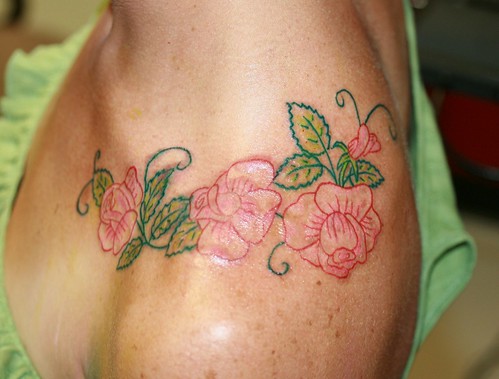It struck me this morning that there are ways I already know what such a community would look like. I've written about it before. It's kind of an allegory, but still...it says exactly what I've been trying to say. So I'm re-printing this blog-post and hoping you will want to join me in or continue in the dialogue about the kind of community we all long for, even if we've never been able to put that longing into words.
I'd love to hear what you think after you read it...
Tattoos and Unconditional Love

“I recalled a morning years ago in a boxy church in Tujunga, the fluorescent lights, chipped folding chairs. Starr charmed as a snake while Reverend Thomas explained damnation. The damned could be saved, he said, anytime. But they refused to give up their sins. Though they suffered endlessly, they wouldn’t give them up, even for salvation, perfect divine love. I hadn’t understood at the time. If sinners were so unhappy, whey would they prefer their suffering? But now I knew why. Without my wounds, who was I? My scars were my face, my past was my life. It wasn’t like I didn’t know where all this remembering got you, all that hunger for beauty and astonishing cruelty and ever-present loss…I had already seen more of the world, its beauty and misery and sheer surprise, than they could hope or fear to perceive. But I knew one more thing. That people who denied who they were or where they had been were in the greatest danger. They were blind sleepwalkers on tightropes, fingers scoring thin air. So I let them go, got up and walked away, knowing I’d given up something I could never get back. Not Ann and Bill Greenway, but some illusion that I’d had, that I could be saved, start again.”
(Fitch, p. 306)
I've been thinking a lot about who I am. Like...really, who am I? The answer to that somehow lies in the life I've lived so far, the things I've seen, the things I've heard and read, the places I've been and the people I've loved and been loved by. All of that is in me.
Like Astrid in the passage above, I say, “Without my wounds, who was I? My scars were my face, my past was my life.” Somehow this is very connected to my altered vision of God, to the wall I have always seemed to run up against. I used to intellectually say that I am sorry for my sin. Yet somewhere inside of me, I didn't feel sorry. Isn't it those things, as well, that make me who I am?
Somewhere inside of me, I feel the longing to live in a tribe where women gather and paint on their bodies the stories of the pain, the anguish, the joys, the surprises and the beauty of their lives. I know the feeling I would have as I looked at my friends’ and sisters’ bodies, the pleasure and the pain they have known represented on their skin, blending together, making something so beautiful tears would fill my eyes.
I would wear my own stories proudly, my regret and my gladness mixing inside, just as the stories on my body ran into one another, making a new, more beautiful story than if one had happened and not the other. No one would know where one story and one emotion left off and where others began. I would be a beautiful tapestry and I would not be ashamed.
I would paint honestly and clearly the truth of my life and I would read the truth of the others’ lives that they painted. I would know myself. I would know them. They would know me. We would know one another. And we would love one another for telling the truth, for being alive. We would call what we saw, the result of the bad and the good in our lives, beautiful, for that’s what it would be.
At twilight all of us women would go and meet all of the men in one central place. The men would have painted their stories on themselves, as well, and there would be a palpable excitement about seeing one another.
We would sing. We would read one another’s stories. We would laugh and cry together. And then we would dance.
I would get up and walk toward him. His eyes would be soft and gentle, filled with a loving look and lit by the fire. Our hands would touch and I would lean against him. Our stories would blend together as we danced to the music in the firelight.
“Cheryl,” he would whisper, love in his voice, as I looked up at him.
“You are wholly beautiful, my love,” he would tell me tenderly and I would know what he meant.
It would mean that he had read all the stories, that he saw it all, that he knew me. That he looked at not just the story on my arm or my left thigh, above my right eyes or across my belly. I would know he had looked at the whole picture, that he saw all of me…the truth of me.
And seeing all that, he would think I was beautiful and love me. Not in spite of the “bad” parts, not because of how much better I became after the bad parts. Not because he avoided looking at some parts or tricked his mind into not feeling anything when he saw them.
Instead, he would love me because of the whole of who I was. Because of everything and because of the beautiful design that no one else wore. Because of every part of me, each bit a result of my life, good and bad. I would be loved unconditionally.

No comments:
Post a Comment